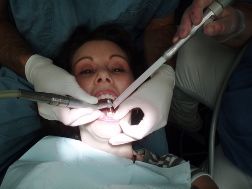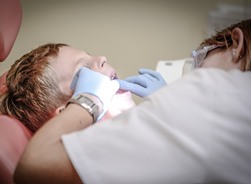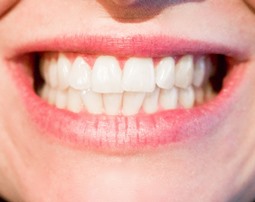How to Choose a Dental Hygienist School near Swedeborg Missouri
 Choosing the right dental hygienist school near Swedeborg MO is an important first step toward launching your new career in dentistry. But prior to making your selection, you must examine and compare your school options. There is far more to performing your due diligence than picking the school with the most affordable tuition or enrolling in the program that is closest to your home. There are other crucial issues to take into account also, including the school’s accreditation and reputation. Dental hygienists generally earn an Associate Degree, as compared to a certificate usually earned by assistants, and can take anywhere from two to three years to accomplish. Naturally with the more extensive training of a hygienist comes more expense. We will cover all of these factors and supplemental questions that you need to be asking the dental hygienist colleges you are assessing later in this article. But first, let’s review the roles of dental hygienists and the training programs provided.
Choosing the right dental hygienist school near Swedeborg MO is an important first step toward launching your new career in dentistry. But prior to making your selection, you must examine and compare your school options. There is far more to performing your due diligence than picking the school with the most affordable tuition or enrolling in the program that is closest to your home. There are other crucial issues to take into account also, including the school’s accreditation and reputation. Dental hygienists generally earn an Associate Degree, as compared to a certificate usually earned by assistants, and can take anywhere from two to three years to accomplish. Naturally with the more extensive training of a hygienist comes more expense. We will cover all of these factors and supplemental questions that you need to be asking the dental hygienist colleges you are assessing later in this article. But first, let’s review the roles of dental hygienists and the training programs provided.
[campusexplorer header_text=”Find Dental Hygienist Schools Near You!” aos=”75346615″ concentration=”2D77CE61″ tracking=”DENTHYG”]
The Job of a Dental Hygienist
 When contrasting the role of a dental assistant to that of a hygienist, the biggest difference is undoubtedly that the hygienist works more on their own. Dental assistants work with and assists the Swedeborg MO practice and the dentists. Hygienists, while also supporting the practice, deal with the patients more on a one-to-one basis. They are frequently the initial person a patient interacts with when called from the waiting room. They examine each patient’s gums and teeth and report their results to the dentists. They also may carry out basic procedures. Based on state law, a hygienist’s duties can include:
When contrasting the role of a dental assistant to that of a hygienist, the biggest difference is undoubtedly that the hygienist works more on their own. Dental assistants work with and assists the Swedeborg MO practice and the dentists. Hygienists, while also supporting the practice, deal with the patients more on a one-to-one basis. They are frequently the initial person a patient interacts with when called from the waiting room. They examine each patient’s gums and teeth and report their results to the dentists. They also may carry out basic procedures. Based on state law, a hygienist’s duties can include:
- Removing tartar, stains and plaque
- Applying fluoride treatments
- Polishing teeth and applying sealants
- Instructing patients about oral care
- Taking X-rays and developing film
- Applying fillings and removing sutures
In order to be licensed in almost all states, dental hygienists must graduate from a Commission on Dental Accreditation (CDA) accredited dental hygiene program. They must also pass the National Board Dental Hygiene Exam in addition to passing any state licensing exams. When they have completed these requirements they are regarded as fully licensed and can add the “RDH” designation to their names, signifying Registered Dental Hygienist.
Dental Hygienist Education Options
As a result of the increased responsibility in contrast to an assistant, dental hygienists employed in Swedeborg MO dental offices are generally required to have an Associate Degree in dental hygiene rather than a certificate. These programs can require anywhere from two to as long as three years to finish and must be accredited by the CDA in virtually every state. They are offered in community colleges as well as trade and technical schools. And in addition to classroom studies learning the fundamentals of dental hygiene, there will be a clinical component to the training as well| Some programs also offer internships with local dental practices or dentists.
Dental Hygienist Online Training
 Selecting an online dental hygienist school may be a viable alternative for getting your training. Just keep in mind that the classes will not be totally online, since there will be a clinical portion to your training. But the balance of your classes will be accessible by means of your personal computer in the convenience of your Swedeborg MO home or elsewhere on your tablet or laptop. For those working while attending college, online dental programs make education far more obtainable. Many may even charge lower tuition fees than their on-campus counterparts. And additional expenses such as for books, school supplies and commuting may be lessened as well. The practical training can usually be completed at a community dental practice or in an on-campus lab. With both the online and clinical training, everything needed to obtain the proper education is provided. If you have the discipline for this mode of education, you may find that attending an online dental hygienist school is the right option for you.
Selecting an online dental hygienist school may be a viable alternative for getting your training. Just keep in mind that the classes will not be totally online, since there will be a clinical portion to your training. But the balance of your classes will be accessible by means of your personal computer in the convenience of your Swedeborg MO home or elsewhere on your tablet or laptop. For those working while attending college, online dental programs make education far more obtainable. Many may even charge lower tuition fees than their on-campus counterparts. And additional expenses such as for books, school supplies and commuting may be lessened as well. The practical training can usually be completed at a community dental practice or in an on-campus lab. With both the online and clinical training, everything needed to obtain the proper education is provided. If you have the discipline for this mode of education, you may find that attending an online dental hygienist school is the right option for you.
Issues to Cover With Dental Hygienist Programs
 Now that you have decided to become a dental hygienist in Swedeborg MO, you can start the process of comparing schools and programs. As we covered at the beginning of this article, a number of students begin by checking out the location and the cost of the schools. Possibly they search for several online options as well. Although these are important initial points to consider, there are several additional questions that you need to ask of the colleges you are reviewing in order to make an informed decision. Toward that end, we have provided a list of questions to assist you with your evaluation and ultimate selection of the best dental hygienist college for you.
Now that you have decided to become a dental hygienist in Swedeborg MO, you can start the process of comparing schools and programs. As we covered at the beginning of this article, a number of students begin by checking out the location and the cost of the schools. Possibly they search for several online options as well. Although these are important initial points to consider, there are several additional questions that you need to ask of the colleges you are reviewing in order to make an informed decision. Toward that end, we have provided a list of questions to assist you with your evaluation and ultimate selection of the best dental hygienist college for you.
Is the Dental Program Accredited? There are many valid reasons why you should only choose an accredited dental hygienist program. If you are intending to become licensed or certified, then accreditation is a prerequisite in nearly all states. In order to take the National Board Dental Hygiene Exam, your dental school must be accredited by the Commission on Dental Accreditation (CDA). Accreditation also helps guarantee that the education you receive is of the highest quality and comprehensive. Swedeborg MO employers frequently prefer or require that new hires are graduates of accredited colleges. And last, if you are applying for financial aid or a student loan, often they are not offered for non-accredited schools.
Is Plenty of Practical Training Provided? Clinical or practical training is an essential component of every dental training program. This holds true for the online college options as well. A number of dental hygienist programs have relationships with area dental offices and clinics that furnish clinical training for their students. It’s not only important that the college you choose offers sufficient clinical hours but also provides them in the type of practice that you ultimately want to work in. As an example, if you have an interest in a career in pediatric dentistry, verify that the school you select offers clinical rotation in a local Swedeborg MO dental office that specializes in dental services for children.
Is There an Internship Program? Ask if the dental colleges you are considering sponsor internship programs. Internships are undoubtedly the best way to receive hands-on, practical experience in a professional dental practice. They help students to transition from the theoretical to the practical. They can also help students develop professional relationships in the Swedeborg MO dentistry community. And they are attractive on resumes also.
Is Job Placement Help Provided? Many students that have graduated from dental hygienist programs require help landing their first job. Find out if the programs you are looking at have job assistance programs, and what their job placement rates are. Programs with high job placement rates probably have excellent reputations within the Swedeborg MO dental profession as well as large networks of contacts where they can place their students for employment or internships.
Are Classes Small? Ask the schools you are looking at how big typically their classrooms are. The smaller classes usually provide a more intimate atmosphere for learning where students have greater access to the teachers. Conversely, larger classes tend to be impersonal and provide little individualized instruction. If practical, ask if you can monitor a few classes at the Swedeborg MO dental hygienist school that you are leaning toward in order to experience first hand the level of interaction between instructors and students before making a commitment.
What is the Total Cost of the Program? Dental hygiene training can vary in cost depending on the length of the program and the amount of clinical training provided. Other factors, such as the reputations of the schools and whether they are public or private also have an impact. But besides the tuition there are other substantial costs which can add up. They can include costs for such things as commuting and textbooks as well as school materials, equipment and supplies. So when analyzing the cost of programs, don’t forget to add all of the costs related to your education. Most colleges have financial assistance departments, so be sure to check out what is available as far as grants, loans and scholarships in the Swedeborg MO area.
Are the Classes Convenient? Before enrolling in a dental hygienist school, you must confirm that the assistant or hygienist program provides classes that fit your schedule. This is particularly true if you will be working while getting your education and must attend classes near Swedeborg MO in the evenings or on weekends. And even if you choose an online college, you will still be required to schedule your clinical training classes. Also, while making your inquiries, ask what the make-up policy is if you should need to miss any classes due to illness, work or family responsibilities.
Attending Dental Hygienist School near Swedeborg MO?
Pulaski County, Missouri
Pulaski County is a county located in the U.S. state of Missouri. As of the 2010 census, the population was 52,274.[1] Its county seat is Waynesville.[2] The county was organized in 1833 and named for Kazimierz Pułaski, a Polish patriot who died fighting in the American Revolution.[3][4]
Pulaski County's earliest settlers were the Quapaw, Missouria and Osage Native Americans. After the Lewis and Clark Expedition of the early 19th century, white settlers came to the area, many from Kentucky, Tennessee and the Carolinas; the earliest pioneers appeared to have settled as early as 1818, and the town of Waynesville was designated the county seat by the Missouri Legislature in 1833. Like the county, Waynesville is also named after an American Revolutionary hero, Mad Anthony Wayne.
As of the census[11] of 2000, there were 41,165 people, 13,433 households, and 9,953 families residing in the county. The population density was 75 people per square mile (29/km²). There were 15,408 housing units at an average density of 28 per square mile (11/km²). The racial makeup of the county was 78.35% White, 11.99% Black or African American, 1.00% Native American, 2.27% Asian, 0.32% Pacific Islander, 2.50% from other races, and 3.57% from two or more races. Approximately 5.84% of the population were Hispanic or Latino of any race.
There were 13,433 households out of which 42.30% had children under the age of 18 living with them, 60.60% were married couples living together, 9.70% had a female householder with no husband present, and 25.90% were non-families. 21.60% of all households were made up of individuals and 7.20% had someone living alone who was 65 years of age or older. The average household size was 2.68 and the average family size was 3.13.
Select the Best Dental Hygienist College near Swedeborg MO
Picking the ideal dental hygienist course is essential if you wish to take the National Board Dental Hygiene examination or, if required in your state, become licensed. As we have covered, there are several options offered to obtain your education and it takes a relatively short amount of time to become a dental hygienist. You can receive your formal education through dental programs at community colleges, vocational schools, technical institutes and trade schools. Graduates of these programs generally earn an Associate Degree. Dental Hygienists typically require roughly 2 years of studies prior to entering the job market. When pursuing a degree you can elect to attend classes on-campus or online. Whichever mode of training you elect to pursue, by asking the questions presented in this article you will be in a better position to make the appropriate selection. And by doing so, you will be ready to begin your journey toward becoming a dental hygienist in Swedeborg MO.
More Great Cities in Missouri
Business Results 1 - 10 of 3



